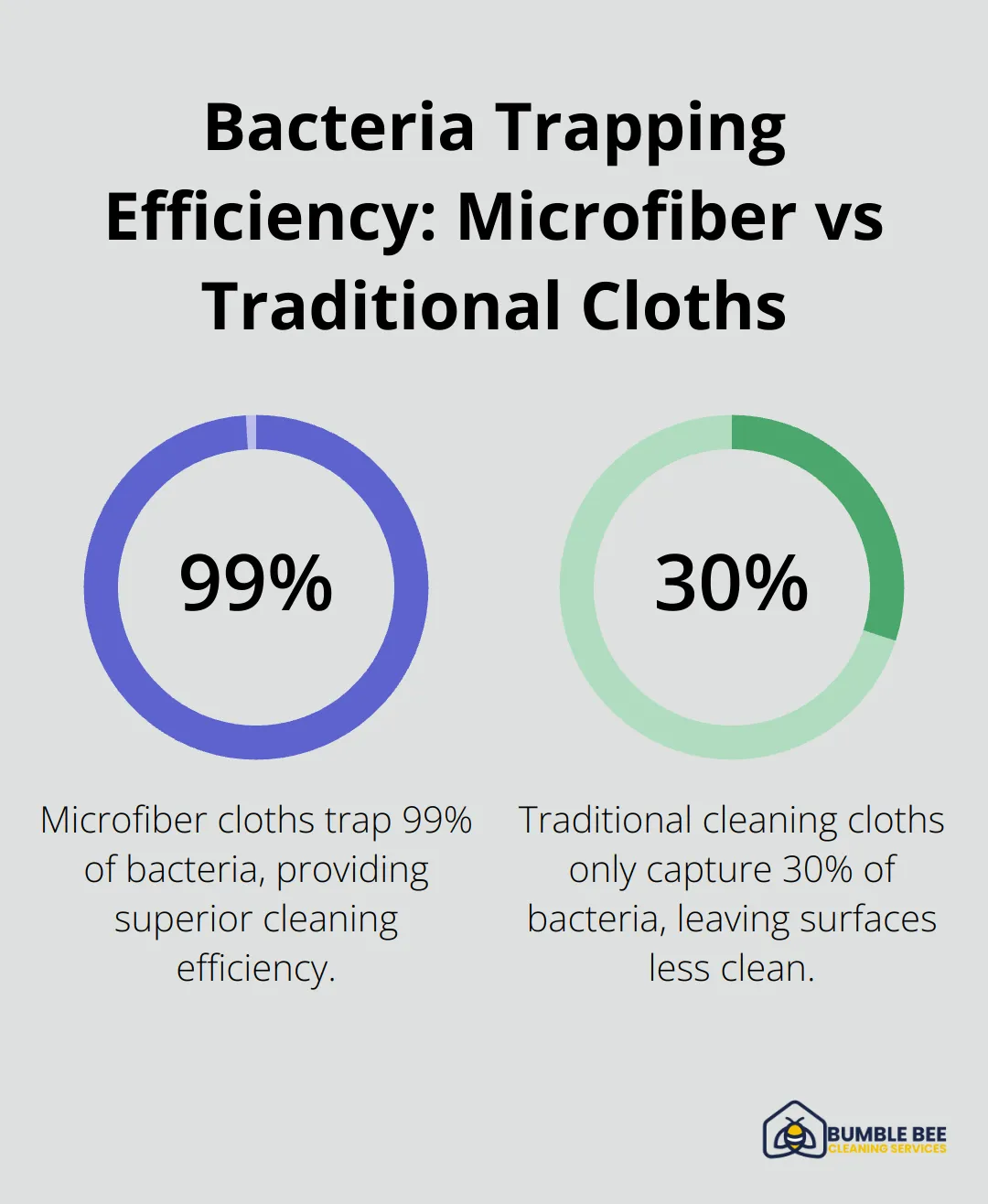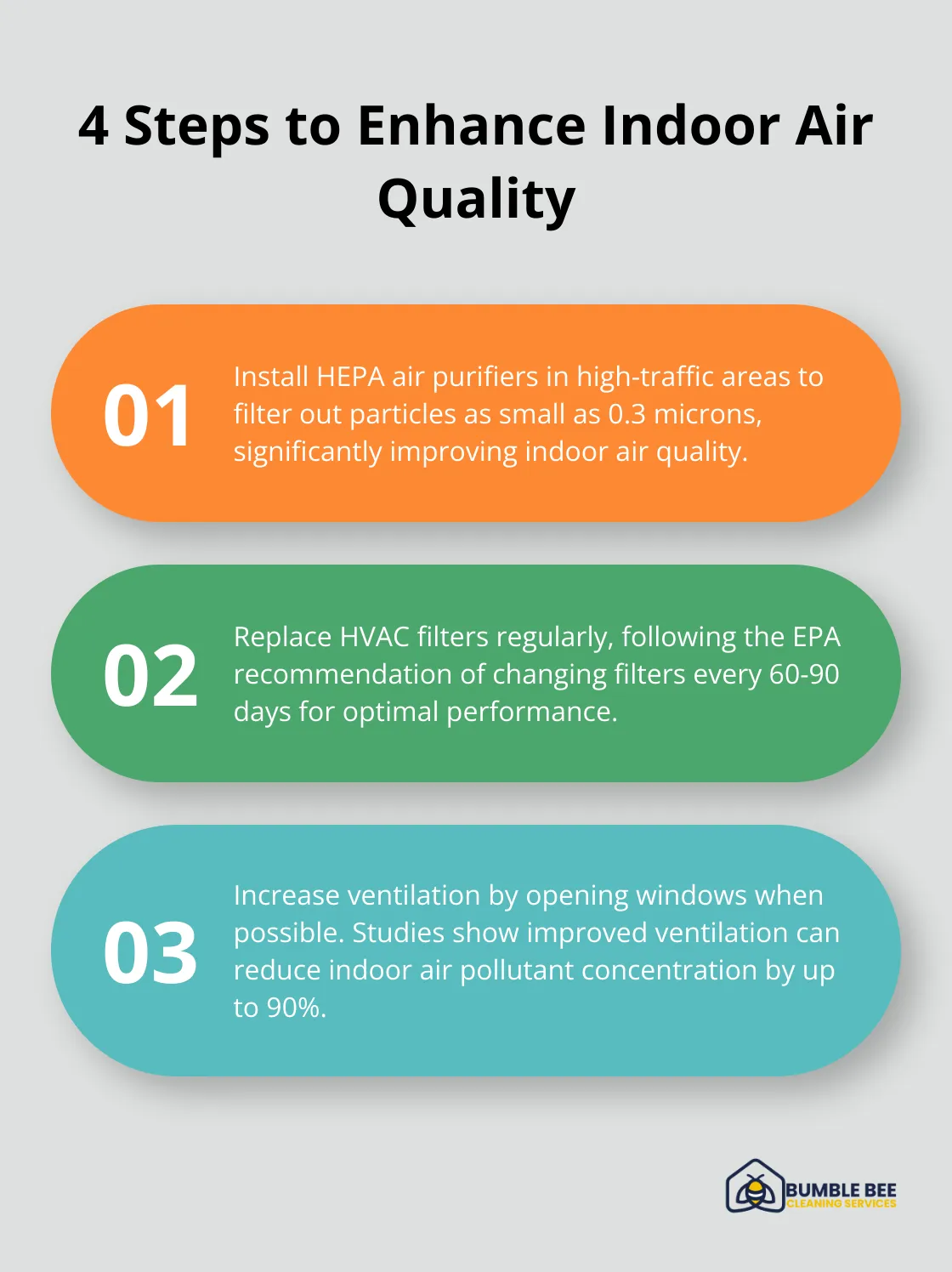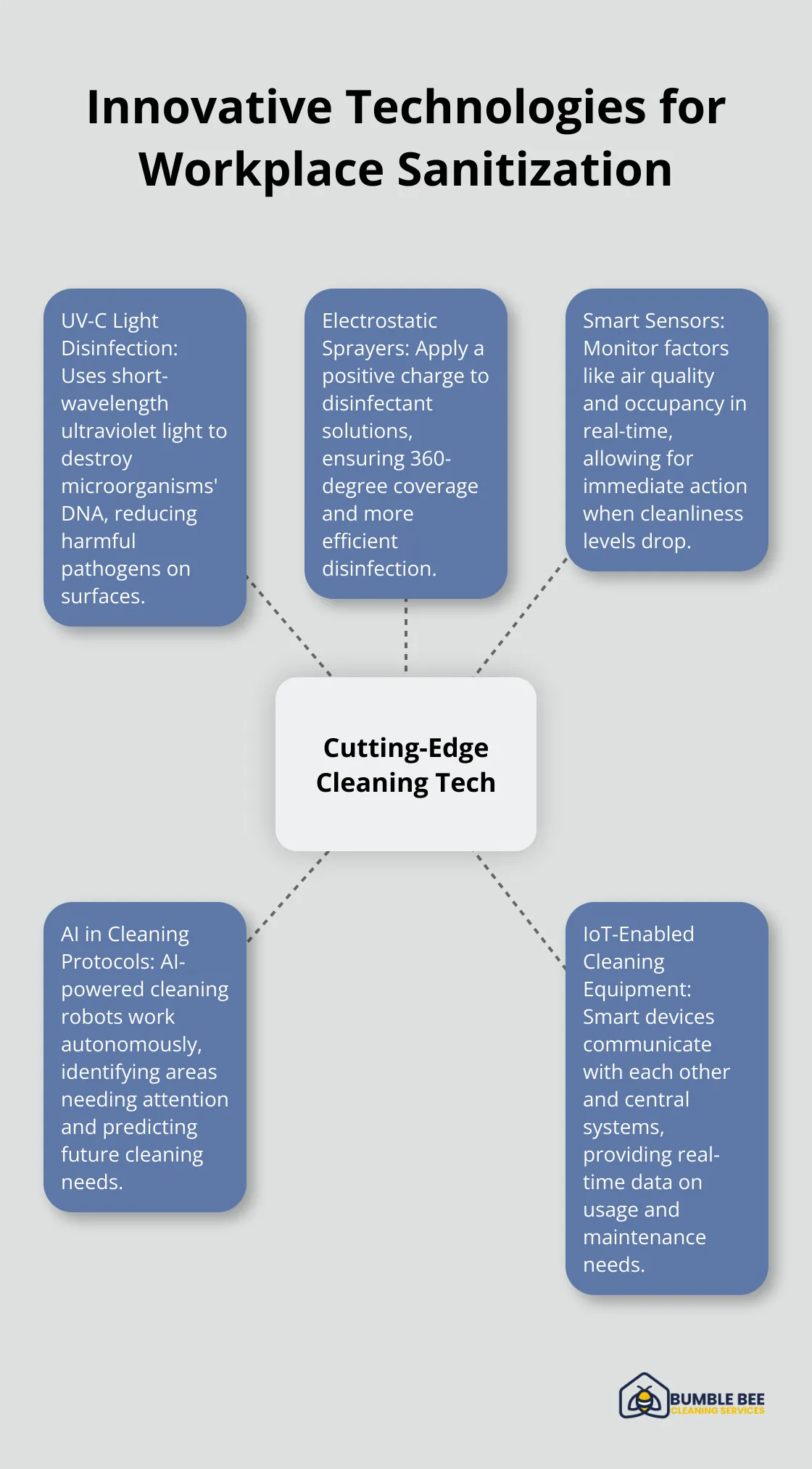In 2025, maintaining a germ-free workplace is more critical than ever for Seattle businesses. At Bumble Bee Cleaning Services, we’ve seen firsthand how commercial disinfection practices can transform office environments.
A clean, sanitized workspace not only protects employee health but also boosts productivity and enhances company reputation. This guide will explore cutting-edge strategies and technologies to create a hygienic, safe workplace in the Emerald City.
Why a Germ-Free Workplace Matters in Seattle
Safeguarding Employee Health
The health of your workforce stands as a top priority. A hygienic office environment actively protects your team’s well-being and reduces the spread of illnesses.
Amplifying Productivity
A clean workspace directly influences productivity. The Harvard Business Review indicates that cluttered environments negatively affect focus and information processing. These statistics underscore the significant impact of a pristine office space on work output.
Elevating Company Image
Your office cleanliness communicates volumes about your business. This statistic highlights the critical nature of first impressions. A spotless office not only impresses clients but also instills confidence in your brand, potentially leading to increased business opportunities.
Reducing Absenteeism
A germ-free workplace significantly reduces employee sick days. Regular cleaning and disinfection (especially of high-touch surfaces) can dramatically decrease the spread of illness-causing pathogens, keeping your team healthy and present.
Complying with Health Regulations
Seattle businesses must adhere to strict health and safety regulations. The Washington State Department of Labor & Industries mandates that employers maintain clean and sanitary workplaces. Professional cleaning services ensure compliance with these regulations, helping you avoid potential fines and legal issues.
As we move forward, let’s explore the effective cleaning strategies that Seattle offices can implement to achieve and maintain a germ-free environment. These methods will not only address current hygiene concerns but also prepare your workplace for future health challenges.
Effective Cleaning Strategies for Seattle Offices
Seattle’s dynamic business landscape demands more than occasional dusting to maintain a germ-free workplace. We have developed a set of proven strategies that effectively combat pathogens and create a healthier office space.
High-Touch Surface Disinfection
High-touch surfaces serve as breeding grounds for germs. These include doorknobs, light switches, elevator buttons, and shared equipment like printers and coffee machines. We recommend disinfecting these areas at least twice daily using EPA-approved disinfectants. For optimal results, use microfiber cloths which trap 99% of bacteria (compared to traditional cleaning cloths that only capture 30%).

To streamline this process, create a checklist of all high-touch surfaces in your office. Assign specific team members to disinfect these areas throughout the day. This approach ensures no surface is overlooked and maintains a consistent cleaning schedule.
Indoor Air Quality Enhancement
Poor air quality can contribute significantly to the spread of airborne pathogens. To combat this, we suggest implementing a multi-faceted approach:

- Install HEPA air purifiers in high-traffic areas. These machines can filter out particles as small as 0.3 microns, significantly improving indoor air quality post-construction.
- Replace HVAC filters regularly. The EPA recommends changing filters every 60-90 days for optimal performance.
- Increase ventilation by opening windows when possible. Studies show that improved ventilation can reduce the concentration of indoor air pollutants by up to 90%.
- Use air quality monitors to track pollutant levels in real-time. This data allows for immediate action when air quality dips below acceptable levels.
Proper Waste Management Implementation
Effective waste management plays a vital role in maintaining a hygienic office environment. We recommend:
- Use hands-free, lidded trash receptacles to minimize contact with potentially contaminated surfaces.
- Empty trash bins daily to prevent the buildup of bacteria and unpleasant odors.
- Implement a color-coded waste segregation system. This can help improve recycling efforts and reduce waste across municipalities.
- Train staff on proper waste disposal techniques, especially for potentially hazardous materials like used tissues or food waste.
Professional Cleaning Services
While in-house cleaning efforts are essential, professional cleaning services can provide a deeper level of cleanliness. These services use industrial-grade equipment and specialized cleaning products to tackle hard-to-reach areas and stubborn grime. Professional cleaners also stay updated on the latest cleaning techniques and health regulations, ensuring your office meets the highest standards of cleanliness.
As we move forward, let’s explore the cutting-edge technology and tools that can further enhance your workplace sanitization efforts. These innovations will not only complement your current cleaning strategies but also propel your office into a new era of hygiene and safety.
Cutting-Edge Tech for a Cleaner Workplace
Technology plays a pivotal role in creating and maintaining germ-free environments in the ever-evolving landscape of workplace sanitization. Let’s explore some game-changing technologies that revolutionize workplace hygiene in Seattle.

UV-C Light Disinfection: The Power of Light
UV-C light disinfection systems have emerged as a powerful tool in the fight against workplace germs. These systems use short-wavelength ultraviolet light to destroy the DNA of microorganisms, rendering them harmless. A study found that UV-C light can reduce harmful pathogens on surfaces.
Many Seattle offices now incorporate UV-C light fixtures into their cleaning routines. Businesses can install these in high-traffic areas or use them as mobile units for targeted disinfection. For optimal results, companies should use UV-C light disinfection in conjunction with traditional cleaning methods, especially in areas like conference rooms and shared workspaces.
Electrostatic Sprayers: 360-Degree Coverage
Electrostatic sprayers represent another leap forward in disinfection technology. These devices apply a positive charge to disinfectant solutions as they spray, causing them to wrap around and cling to negatively charged surfaces. This results in more thorough and efficient coverage compared to traditional spraying methods.
The Environmental Protection Agency (EPA) has recently revised air quality standards, which may impact the use of cleaning technologies in indoor spaces. When choosing a disinfectant solution for electrostatic sprayers, companies should opt for EPA-registered products that effectively combat a broad spectrum of pathogens.
Smart Sensors: Real-Time Cleanliness Monitoring
Smart sensors transform how we monitor and maintain cleanliness in the workplace. These devices can detect various factors that impact hygiene, such as air quality, humidity levels, and even the presence of certain bacteria. Smart sensors allow for immediate action when cleanliness levels drop below acceptable standards by providing real-time data.
Some Seattle offices have installed occupancy sensors in restrooms that alert cleaning staff when a certain number of people have used the facilities. This ensures timely cleaning and restocking of supplies. Other businesses use air quality sensors to trigger automatic air purification systems when pollutant levels rise.
Integration of AI in Cleaning Protocols
Artificial Intelligence (AI) has started to make its mark in the cleaning industry. AI-powered cleaning robots can navigate office spaces autonomously, identifying areas that need attention and adjusting their cleaning patterns accordingly. These robots (equipped with sensors and cameras) can work alongside human cleaners, increasing efficiency and ensuring consistent results.
Some advanced AI systems can even analyze cleaning patterns over time, predicting when specific areas will need attention based on usage data. This proactive approach to cleaning helps maintain a consistently high level of hygiene throughout the workplace.
IoT-Enabled Cleaning Equipment
The Internet of Things (IoT) has revolutionized cleaning equipment, making it smarter and more efficient. IoT-enabled devices can communicate with each other and with central management systems, providing real-time data on usage, performance, and maintenance needs.
For example, smart soap dispensers can alert staff when they need refilling, while connected vacuum cleaners can provide data on cleaning patterns and efficiency. This technology not only improves the quality of cleaning but also helps optimize resource allocation and reduce waste.
By combining cutting-edge technology with skilled professionals, businesses in Seattle can significantly elevate their cleanliness standards and ensure a germ-free workplace.
Final Thoughts
A germ-free workplace in Seattle requires a multifaceted approach that combines traditional cleaning methods with advanced technology. High-touch surface disinfection, improved indoor air quality, and proper waste management significantly reduce pathogen spread. The integration of UV-C light disinfection, electrostatic sprayers, and smart sensors further elevates workplace hygiene to unprecedented levels.
A clean, healthy office environment protects employee well-being, boosts productivity, and enhances company reputation. It also ensures compliance with local health regulations, potentially saving businesses from costly fines and legal issues. These benefits make the investment in workplace hygiene a sound business decision with substantial long-term returns.
We at Bumble Bee Cleaning Services understand the unique challenges Seattle businesses face in maintaining hygienic workspaces. Our team of certified professionals specializes in commercial disinfection services tailored to meet the specific needs of your office environment. We help businesses achieve and maintain the highest standards of cleanliness and hygiene (using eco-friendly products and state-of-the-art equipment).
